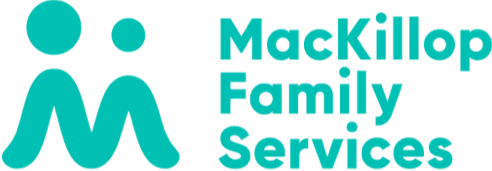00:05 [Francis] On the village we do a lot of cultural stuff.
00:08 Sport, fishing, marroning.
00:11 Teaching the respect for the bush and why everything has
00:14 a purpose.
00:15 And understanding where our spiritual life in terms of the
00:18 Noongar people fit in.
00:20 And he's comfortable within his own skin and
00:22 that's the most important thing.
00:23 Is to make him comfortable.
00:24 Rainbow Serpent, who created all this for Noongar people.
00:27 We call him the Wagyl.
00:28 Roelands village is a former Churches of Christ mission.
00:33 From the early 1940s until the 1970s.
00:36 About 500 Aboriginal children
00:39 were taken from their families.
00:41 A Stolen Generation.
00:44 And placed at the mission.
00:45 There's documentation within Government records to say
00:49 we will take the half cast children out of
00:51 those communities, raise them as white.
00:53 And the old traditional Aboriginal would be no more.
00:57 That's the way the Governments at all levels looked at
00:59 Aboriginal people.
01:00 And to us this is like yesterday.
01:02 Today, the Aboriginal Controlled Community Organisation
01:06 known as Woolkabunning Kiaka have taken Roelands back.
01:10 And have developed a healing community that
01:13 provides opportunities for empowerment and for children to
01:16 have a positive future.
01:18 They've got a lot of opportunities now, this is where we
01:20 focus.
01:21 Where we taken on that journey, take them through it
01:23 Not to hold hate or anything like that but to have an
01:25 understanding.
01:26 What's happened in the past.
01:27 [Francis] That's Pop.
01:29 [Little Boy] Yes.
01:29 [Francis] And that's my cousin, Mingar.
01:31 [Les] And they then get a good appreciation for
01:34 where they are and the opportunities that
01:37 are there before them.
01:38 Which we never had.
01:40 [Francis] Roelands village today is used more
01:42 as a healing center.
01:44 People being able to visit and feel at ease with themselves.
01:47 Given a difficult time that we've had here as kids.
01:50 But it's mainly about to skill our community up and create
01:53 opportunities for our community.
01:55 As well as now being used for the purpose of looking after
01:58 some of our Noongar kids.
02:00 And trying to give them a better life.
02:03 MacKillop is working with Woolkabunning Kiaka to support
02:07 Noongar children in care.
02:09 We believe Aboriginal people know best when it comes to
02:12 bringing up Aboriginal children.
02:14 And together we've developed a new model of care known as
02:18 Other Home Care.
02:19 Where children are deeply connected to community,
02:22 to their culture and to the land.
02:25 This provides cultural safety.
02:28 Growing up, kids have always moved around and been at
02:32 relations places, you know, staying at mam's pop's
02:34 or aunties and uncles and cousins so
02:37 it's someone else's home, this other home.
02:39 So for us this is just another newer home,
02:42 another Noongnar family.
02:43 That these kids are gonna be staying with.
02:45 So it's still culturally how it was for us, you know,
02:49 growing up.
02:50 It's not a foster home, it's not a DCP house.
02:53 This is other home.
02:55 [Francis] And what if you catch a little marron
02:57 what do we have to do?
02:59 That's right.
03:00 Throw it back in.
03:02 [Violet] With Phillip have come and worked with us and
03:05 listened to us and that's why it is where it is now
03:08 and not him coming in and saying this is how it needs to be.
03:13 It's Aboriginal people saying what works best for us and
03:17 then working with them to make it happen the way that we
03:21 see it should be happening.
03:23 [Francis] Now when you know when you walking on that log.
03:25 You know the marrons know you're here.
03:27 Because when you walk on that log, the log shakes
03:29 in the water.
03:30 So the marrons underneath there, is he shaking or what?
03:33 Working with the young fella that I got.
03:35 When we first got him, very timid, very shy,
03:39 very aggressive.
03:40 Obviously a lack of trust, proofs to be in 17 homes.
03:45 And we were pretty much the last resort but
03:47 we we're in it for the long haul and we've seen a drastic
03:51 change in terms of how he views people.
03:54 His respect to his elders, his respect to his community.
03:57 [Violet] We see the other side from the parents
03:59 point of view as well.
04:00 And we want to put families back together.
04:04 Some kids grow up into people being whatever they
04:07 want to be.
04:08 To get a good education, to see it and support them
04:11 in whatever they wanna be.
04:13 [Violet] So it's now our turn to make a difference.
04:16 To be our strong Noongar leaders, that you know.
04:22 [Les] We all, all of us, we know family.
04:27 You know, this young lad coming here, we were able
04:29 to tell him who he was.
04:31 How he fits in.
04:33 How he's related to us, you know.
04:36 We’re his mums and pops, all his family there his got.
04:40 And he's definitely got a feel of home, a real home.
04:45 And that pride within him makes us all proud.
04:50 Like I say sadly there's a lot more kids out there
04:52 needing a stronger environment and we are ready, we're here
04:56 to expand that role.
